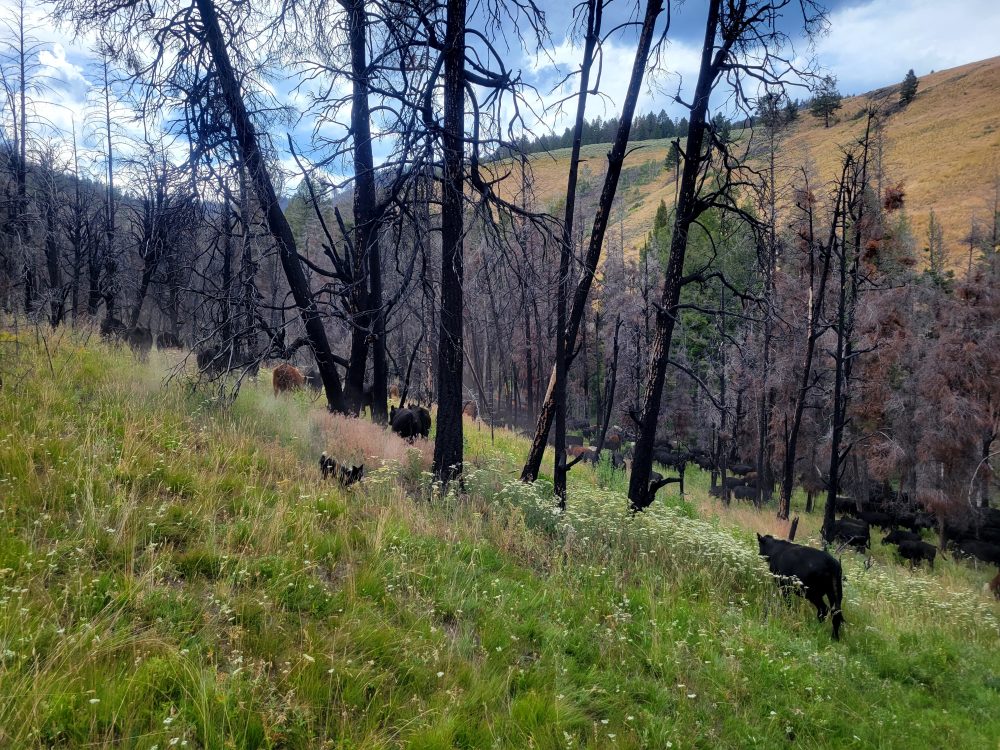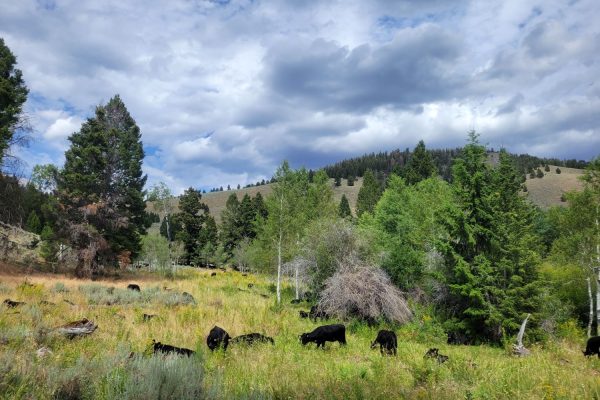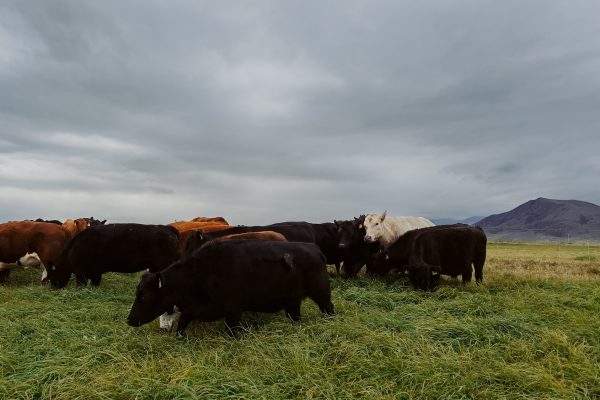 Newsletter from April 17, 2015
Newsletter from April 17, 2015 Our rocky soils are thawed, though still cold from winter. We did some water line excavation yesterday with our ancient excavator (the first of its kind from 1966!) to get at a leak that developed over the winter, and found that there was soil life far deeper than we imagined under Alderspring’s grassy surface. I posted a video about what Collin and I found on youtube here. Check it out to learn about Alderspring’s underground employees (spoiler alert: it’s earthworms, at 6.5 feet underground)!
That soil life is the foundation of Alderspring’s beef flavor, and nutrition. Those animals break mineral material out of our rocky volcanic loams and make it available for plant growth and nutrient density. It is no wonder that mama cows live a long life on Alderspring (about 5 years longer, or 35% longer than the national average).
I did some earthworm research (and yes, there is a lot more to soil life than earthworms) to find out just how much soil goes through an earthworm in a year (10 lbs, or around 2 gallons for each worm).
Then, I did some calculations on earthworm density based on counts we have done on the ranch”¦and found that earthworms alone turn over more than 100 thousand dump truck loads worth of Alderspring topsoil each year (just on the 350 acres of irrigated ground—I am not including the 48,000 acres of summer pasture that we run on).
I checked my numbers three times, and am incredulous. And humbled. There is no farming mechanism or equipment that even comes close to this soil stirring and nutrient availability mechanism”¦despite our high-tech drone flying, computer calibrated, spray nozzling, GPS controlled farm machinery based North American agriculture.
Modern agricultural practices of plowing, spraying, ripping, and fumigating are soil life killers. In a simple 2014 university experiment, earthworm numbers were dramatically reduced after normal levels of Roundup application and fertilizer use. Wholesale mortality or disappearance of worms occurred after 8 weeks. (You can read the study here.)
It is no wonder that most conventionally raised produce and protein is flavorless, and as it follows, nutrition poor. The “heartland” of America is the heaviest user of Roundup in the world and is where most of grass fed beef sold in the US is raised (which is one of the reasons why I say that the grass fed beef available in most supermarkets is not much superior to conventional beef). Check out this map of USDA data, showing the increase in Roundup application in the US over the past 10 years or so. Our area of mountainous Idaho remains conspicuously white (untreated), although the low elevation Snake River Plain, a few hundred miles to the South of us, is brown as dirt.
Franklin D. Roosevelt said that “the nation that destroys its soil destroys itself”. The living part of the soil is compromised in most of the US today, and many farmers and ranchers have lost the perspective that soil life is important, and see soil primarily as a matrix to which we must add amendments (hydroponic production is a logical extension of this, but I’ll save that rant for another day).
The earthworm vs. Roundup article the author noted that the researcher, Dr. Sharon Pochron, “explained that they [the findings about earthworm mortality] are more relevant for everyday gardeners than for large-scale farmers, who generally do not care as much about earthworms.” Why is this?
It may be because of the huge paradigm shift required to think that way. It would require farmers and ranchers to rethink their entire production protocol, and that is untenable in the razor-thin margin of agriculture in the US. The risk-adverse farmer is unlikely to put their marginal operation on the line to chase down what may or may not be true about earthworms.
This is why organic matters, and why it costs more than conventionally produced food. Much of what an organic farmer does is experimental, and the extra value of organic helps to weather those experiments (especially when they fail). Much of what we do, and what other organic producers do doesn’t seem to matter to the bottom line. It sure seems to matter to the earthworms though.







Leo Younger
Thanks for writing and posting this article. Viewed the Alderspring video on earthworms at 6.5 to 7 feet deep underground. Read the article by Dr. Sharon Pochron, after typing search words earthworms fertilizer Roundup in the search field. Viewed the 20 year map which showed years 1992 through 2012, one year at a time, then automatically repeating, revealing how some glyphosate-crazy farmers and ranchers have been and are killing their soils’ earthworms and much other soil life. However, a better, in terms of versatility and choice of greater range of selectable years up to and including 2019, is available at a USGS (United States Geodetic Survey) site (no ads there!): https://water.usgs.gov/nawqa/pnsp/usage/maps/show_map.php?year=2019&map=GLYPHOSATE&hilo=L You can select other pesticides of choice from their list, by clicking on Select a Pesticide. Not all are synthetic poisons. There are also Neem Oil and Kaolin Clay, for example. Not every pesticide has a 2019 map, but many do.
Natalie
That is so awesome that you found earthworms so far below the surface! When I studied organic horticulture (about 12 years ago), I was taught the same as what you mentioned: that they are just in perhaps the first foot, or less, of soil; that the “living” soil horizon was much higher than what you found. Given how deep the roots of some plants go (tagasaste can go as much as 10 meters down), I find it kind of doesn’t make sense about the living part, though it’s probably true that the greatest amount of biology is up higher. I don’t know and I’m not a scientist, just a gardener who is always amazed by the life that surrounds us. Keep up the great work!
BTW, the second link didn’t work for me. It went to a publication (The Statesman), but I didn’t notice an article about soil.
Jeff
Could it have been that the worms were going down that deep at that spot because of the water from the pipe bust?
It would have been interesting to dig down that deep 20 feet from that spot to see if the result was the same.
Yes, earthworms are amazing in many ways.
Terry
This is the correct link for the roundup/worms story:
https://www.sbstatesman.com/2014/03/04/under-the-microscope-roundup-and-fertilizer-kill-worms/
Caryl Elzinga
Thank you, Terry!
Natalie
Thank you for the link.
Nice and informative study with, in my mind, unsurprising results.